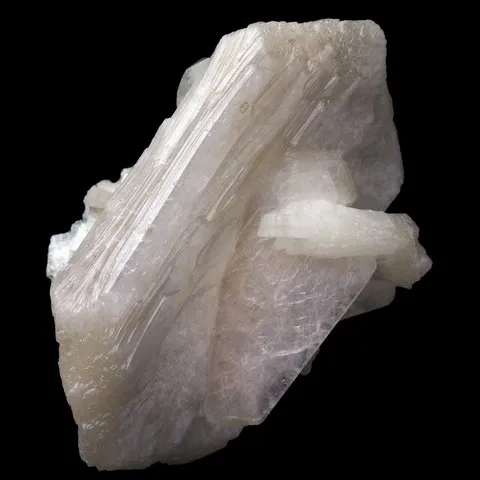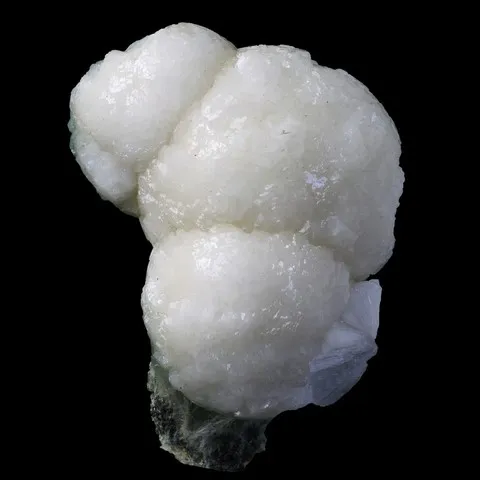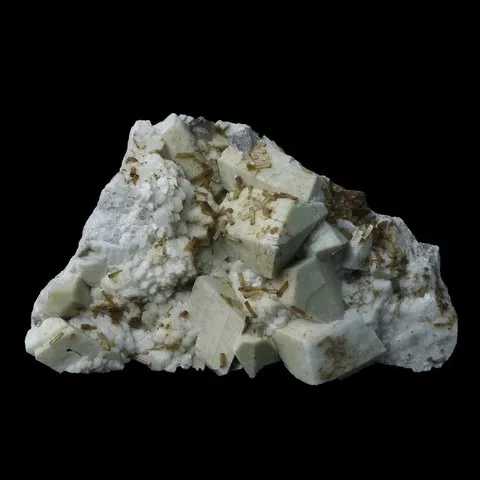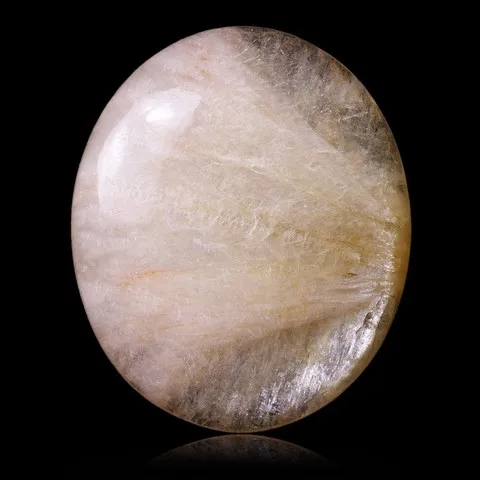STILBITE
Class : Silicates
Subclass : Tectosilicates
Crystal system : Monoclinic
Chemistry : NaCa2Al5Si13O36 14H2O
Rarity : Common
Stilbite is one of the minerals of the group of zeolites, hydrated aluminosilicates made up of a framework crisscrossed with channels in which water and large cations are inserted. Stilbite is especially common in the cavities of volcanic rocks ; it is sometimes also found in metalliferous veins, skarns, and incidentally in pegmatites, alpine clefts and metamorphosed limestones, as an ultimate stage of hydration. Its name comes from the Greek stilbein (to shine) or stilbe (shine) in allusion to its vivid pearly luster. Isolated crystals are rare. Stilbite occurs almost exclusively as flattened crystals twinned by interpenetration, stacked in characteristic sheaves or divergent double fans reminiscent of a bow tie. Transparent to translucent, it is most often colorless to white, sometimes pink to red. Stilbite is one of the rare zeolites that are sufficiently abundant and pure to constitute exploitable deposits. In order to respond to the strong market demand, zeolites have been produced artificially since 1941. They owe this industrial success to their crystalline structure which presents channels of specific diameters in which water molecules can take place, attach themselves and move of hydrocarbons or ions, endowing these minerals with astonishing capacities of ionic exchange, dehydration or molecular sieves. The first use of zeolites was as a water softener in steam engines. Today they are used as a purifier of agricultural landfill effluents by capturing ammonia, as well as in the nuclear industry, for the extraction and fixation of radionuclides possibly present in the residual effluent solutions of reactors. The main current use of zeolites nevertheless lies in the petrochemical industry where they serve as molecular sieves for the separation of hydrocarbons. Easily dehydrated by heating, they then constitute powerful dehydrators. The stilbite can sometimes be cut into cabochons. Because of its abundance in the volcanic cavities of the Deccan traps, it is often looked down upon by mineral collectors.
Stilbite in the World
Stilbite in France
In France, stilbite is reported in the alpine slots of the Combe de la Selle (Isère) in 5 cm crystals and in Cambo-les-Bains (Pyrenees). It is also found in talc quarries from Trimouns (Ariège) in millimetric crystals.
Twinning
Quasi-systematic twinning by interpenetration on {001}.
Fakes and scams
Some Indian samples can be dyed in fancy colors.
Hardness : 3.5 to 4
Density : 2.2
Fracture : Irregular to conchoidal
Streak : White
TP : Translucent to transparent
RI : 1.479 to 1.505
Birefringence : 0.010 to 0.013
Optical character : Biaxial -
Pleochroism : Weak
Fluorescence : None
Solubility : Hydrochloric acid
Magnetism : None
Radioactivity : None





